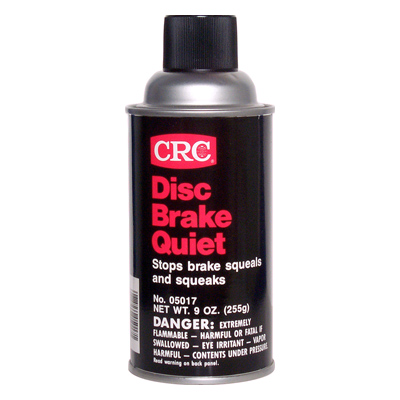I am still having squealing going on in the brake area of the spyder, the dealer said it could be either the dealership where i got it use some kind of wheel cleaner and or tire shine and got it into the brakes (which is possible because it was on the show room floor of a non-bike dealer) or it could be just because of the type of brakes and they upgrade them to the organic brake pads..
My question is, how hard is it to change out the brake pads and is there a site with decent prices for the organic brake pads because im looking around 350 and up at the dealer for them to buy and put on the brakes.
Thanks in advance!
Changing out the brake pads is not all that difficult. You can get pads for a lot less than $350 (that surely includes labor?? :yikes

I sell EBC Semi-Sintered brake pads. They have been developed using technology from their racing line of pads.
For price comparison the front pads are $46.50 a set (you need 2). Rear pads are $35.95 (you need just 1). A full set is $128.95 including shipping. I have found that most people need to change the front pads every other time they change their rear pads (rear pads seem to last about 1/2 as long as the front pads).
But you may not need new pads. Here are some things you can try, not necessarily in this order.
1- Blow out/off your brake pads with compressed air or pressure wash with soap and water. Some squealing is caused by a buildup of brake dust fibers.
Advantage - Very cheap, easy. Disadvantage - Temporary cure
2- Use brake/rotor spray cleaner. There are many products out there.
Advantage - Cheap, easy. Disadvantage - Temporary cure
3- Use a brake pad compound (applied to the back of the brake pad).
Advantages - inexpensive, provides a more permanent cure. Disadvantage - Requires you remove brake pads to apply. Best done when you have to replace the brake pads anyway.
4- In some cases it may help to use a fine Emory paper to lightly sand the rotor to remove glazing. Helps if you have glazing, doesn't if you don't. But won't hurt anything. This also helps to re-surface existing pads or to 'Bed' a new set of pads.
5- Make sure your pads are free to move and seek their own position as designed. If the pads/calipers are binding at all the pads may not release completely. This is easy to check. Lift the tire off the ground and spin it. The pads will just touch the rotor because they never release 100%. But the drag should be minimal.
The rest of the story is the various brake pad materials. Originally, Spyders came with Semi-Metallic brake pads. Now BRP sells Organic pads for them. Here is a generalization about the various options.
1- Semi-Metallic - (Steel particles embedded into pad compound) Original equipment on early Spyders.
Advantages - Extremely good stopping power - Excellent fade resistance - Long life.
Disadvantages - Can be very noisy (squealing) - Hard on rotors (not really that big a deal) - Brake dust will rust and adhere to parts/wheels
2- Organic - Current OEM on Spyders
Advantages - Quiet - Easy on the Rotors (not that big a deal) - Brake dust removed more easily, will not rust.
Disadvantages - Reduced stopping power - Reduced fade resistance - Relatively short life span.
3- Semi-Sintered (similar to Semi-Metallic except that a copper alloy is used in place of steel)
Advantages - Stopping power equal to Semi-Metallic, Fade resistance as good or better than Semi-Metallic - Longer life than Organic but less than Semi-Metallic - Easy on Rotors (not that big a deal) - As quiet as Organic - Brake dust removed more easily, will not rust.
Disadvantages - Shorter life than Semi-Metallic


